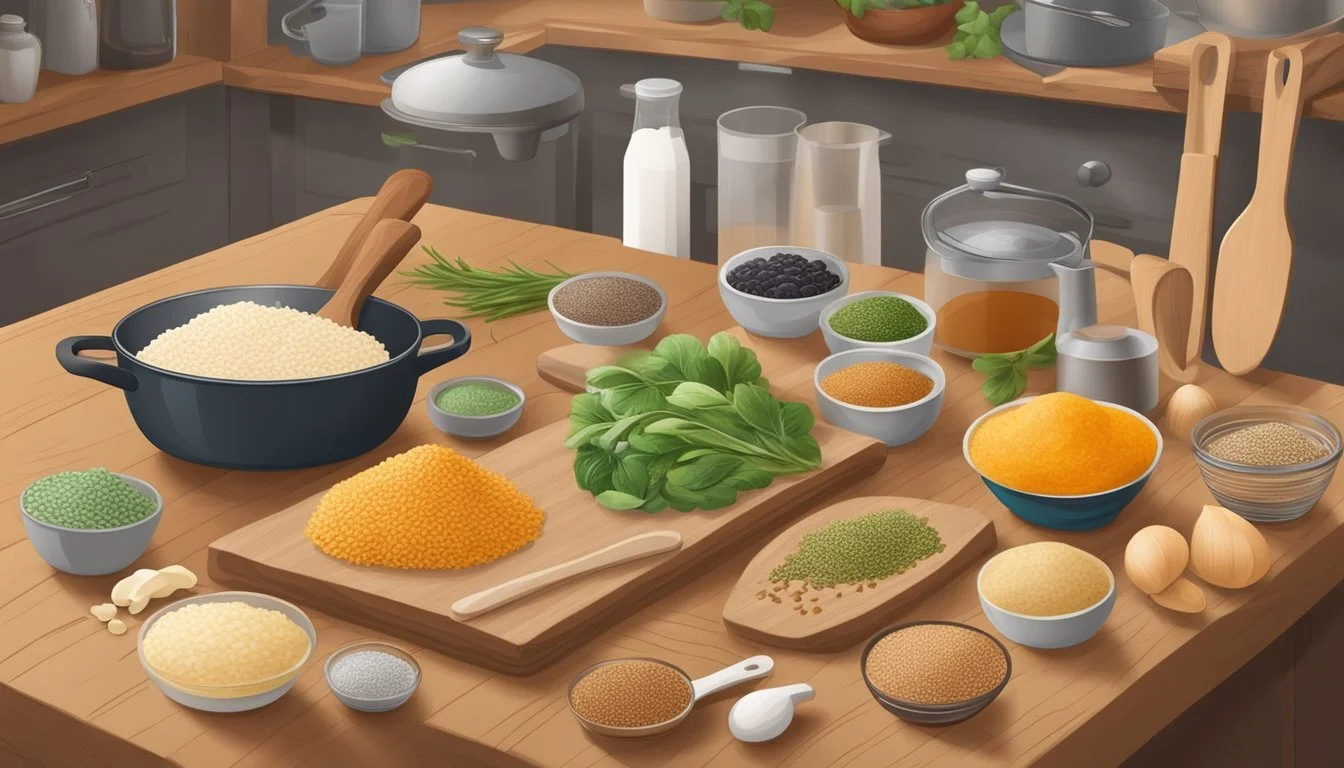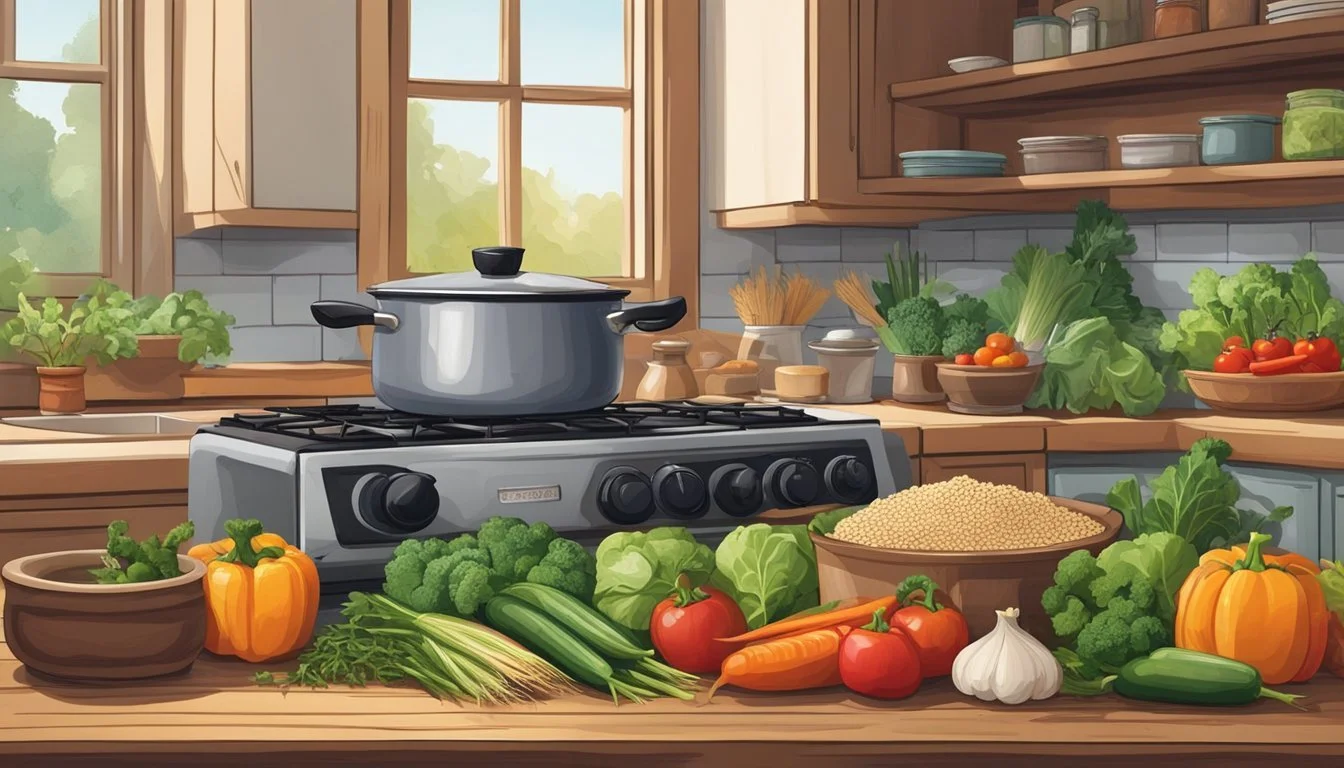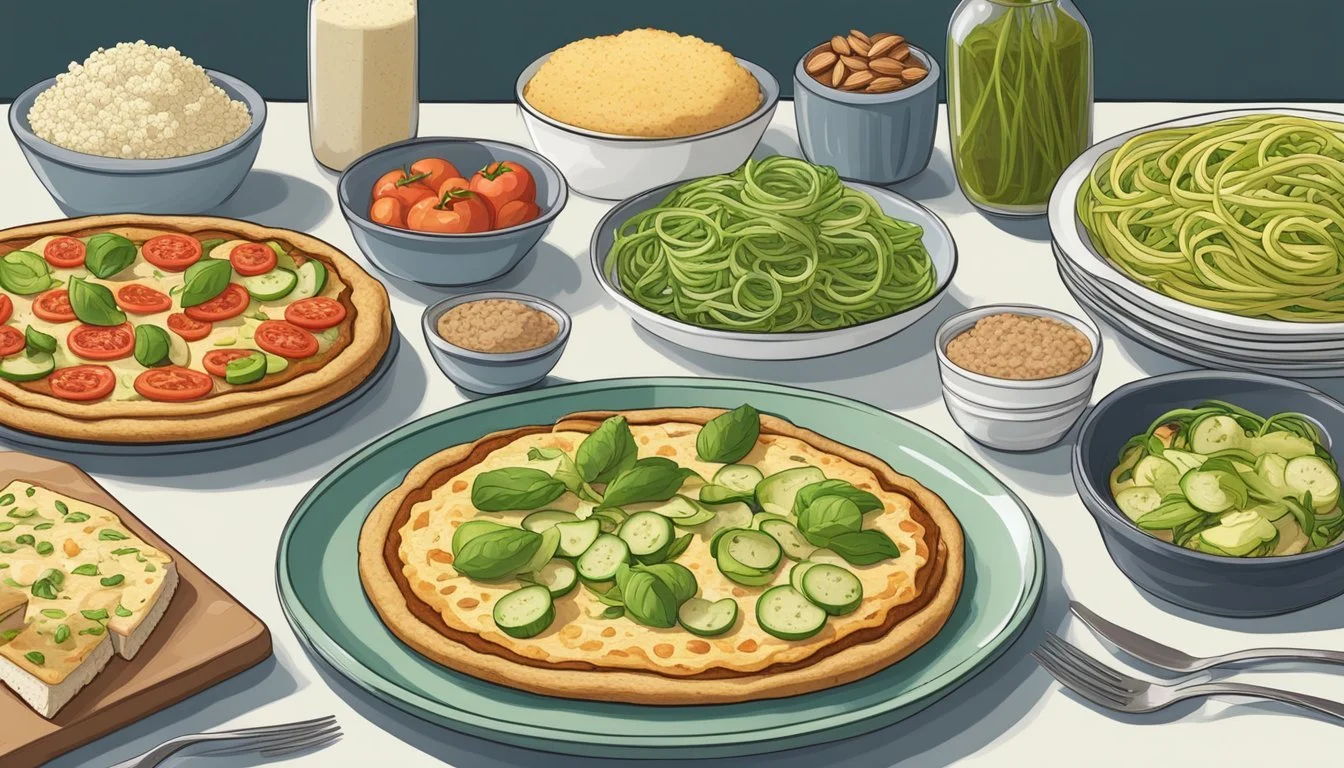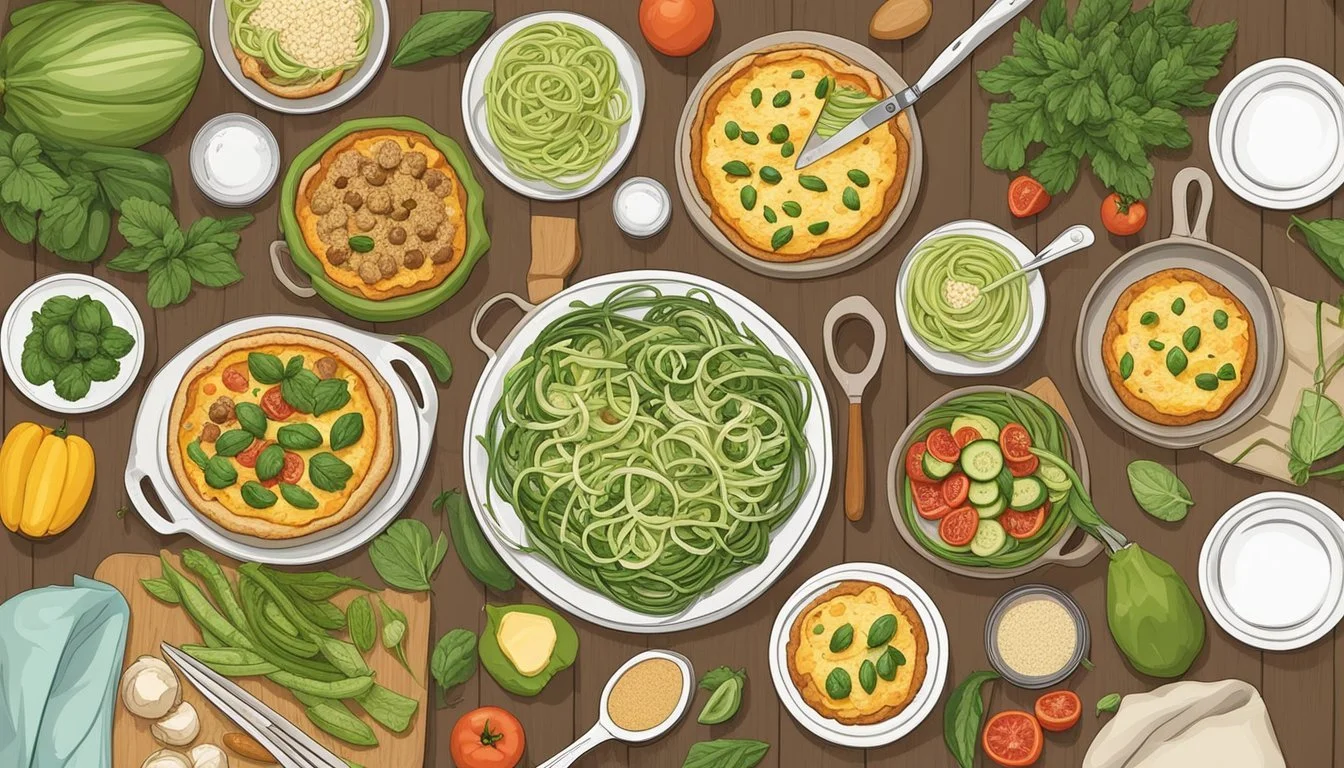Grain-Free Comfort Foods
Discover Nutritious Alternatives to Homestyle Dishes
Embracing a grain-free diet does not mean one has to forsake the warmth and nostalgia tied to classic comfort foods. The grain-free movement has gathered momentum, driven by dietary restrictions, health-conscious decisions, and personal preferences. Traditional dishes that typically hinge on wheat, barley, rye, or other grains are being reinvented with alternative ingredients. These revisions retain the satisfying flavors and textures of the originals while aligning with the requirements of a grain-free lifestyle.
Comfort food is often associated with indulgence and a sense of home-style satisfaction, yet it carries the potential for nutritional enhancement. By substituting grain components with vegetables, nuts, and other nutrient-dense alternatives, classic recipes are transformed into healthful offerings that cater to a variety of dietary needs. These modifications often result in meals that are not only comforting but also energizing, supporting a well-balanced diet without sacrificing enjoyment.
In the culinary quest for healthier versions of beloved recipes, chefs and home cooks alike have pioneered creative solutions. Rich, satisfying lasagna can now be enjoyed with layers of thinly sliced zucchini in place of pasta, while gnocchi made from potato or other root vegetables provide a sumptuous alternative to the traditional wheat-based dumplings. The evolution of comfort food continues, proving that flavor and tradition can thrive alongside healthful, grain-free innovations.
Indulging in grain-free comfort foods offers a delightful way to savor familiar flavors while prioritizing health and well-being. Whether it's a cozy casserole or a heartwarming stew, embracing grain-free alternatives in comfort food favorites can provide a nourishing and satisfying experience.
For those managing grain-free carb cravings, exploring a variety of grain-free comfort foods can offer a fulfilling solution to support overall wellness and balance. By incorporating nutrient-rich ingredients and creative culinary techniques, individuals can enjoy comforting meals that align with their dietary goals.
Understanding the influence of grains on grain-free hormonal balance and grain-free cognitive function can deepen the appreciation for embracing grain-free comfort foods. By being mindful of ingredients and exploring diverse recipes, individuals can create dishes that cater to their well-being and delight the senses.
Cultivating a grain-free garden can also enrich the experience of preparing grain-free comfort foods, allowing individuals to harvest fresh produce and herbs to infuse their creations with vibrant flavors and wholesome goodness.
During grain-free holidays, the joy of savoring grain-free comfort foods can elevate festive gatherings, creating a sense of warmth and togetherness while honoring dietary preferences.
For added convenience, exploring grain-free meal delivery services can provide an effortless way to enjoy a variety of comforting and nourishing dishes, ensuring that individuals can savor the pleasures of grain-free comfort foods with ease.
Understanding Grain-Free
Grain-free diets eliminate specific cereals known to cause health issues for some individuals. This section navigates through the basics, health benefits, which grains to avoid, and managing health conditions on a grain-free diet.
The Basics of a Grain-Free Diet
A grain-free diet excludes all grains and is often adopted due to allergies or intolerances. It consists primarily of meats, fish, eggs, dairy products, legumes, nuts, seeds, fruits, and vegetables. Nutritional alternatives to traditional grain-based products include almond flour, coconut flour, and nutritional yeast, the latter being a popular choice for adding a cheese-like flavor to grain-free dishes.
Health Benefits of Going Grain-Free
Going grain-free may lead to various health benefits such as improved digestion and reduced inflammation, which can be a result of certain grain-based compounds. Weight loss is commonly reported, possibly due to the reduced consumption of processed grains high in calories and rapid-acting carbohydrates, which can affect blood sugar levels. People with diabetes may notice improved blood sugar control.
Grains to Avoid
Those following a grain-free diet should avoid the following grains:
Wheat
Corn
Oats
Rye
Barley
It's worth noting that while all gluten-containing grains are excluded in a grain-free diet, not all grain-free diets are gluten-free as they may include other non-gluten ingredients.
Navigating Common Health Conditions
A grain-free diet can be particularly beneficial for individuals with specific health conditions such as celiac disease or non-celiac gluten sensitivity, as these conditions are triggered by the presence of gluten—a protein found in wheat, barley, and rye. Avoiding grains may reduce symptoms tied to inflammation and other immune reactions. However, it is essential for individuals to consult healthcare professionals before making significant dietary changes, especially if they have underlying health conditions.
Alternative Ingredients
In crafting grain-free comfort foods, one adapts classic favorites by incorporating nutrient-dense substitutes that maintain flavor while improving the dish's health profile. Each category of substitutes has its own role, whether it's adding protein, replacing gluten-containing grains, bringing in more fruits and vegetables, or offering dairy and non-dairy alternatives.
Protein-Packed Substitutes
For a boost in protein without relying on traditional grains, cooks often reach for legumes such as chickpeas, lentils, and various types of beans. Nuts and seeds—including almonds, walnuts, and chia seeds—also contribute to the protein content while adding essential fatty acids and texture. Meat and fish are excellent protein sources for non-vegetarian dishes (What wine goes well with vegetarian dishes?), with many grain-free recipes featuring chicken, turkey, beef, or salmon.
Gluten-Free Grains and Cereals
Although strictly not grains, pseudo-cereals like quinoa, buckwheat, millet, and amaranth are popular gluten-free alternatives that mimic the mouthfeel and comfort of grain-based foods. They are versatile and can be used in everything from porridges to pilafs. Almond flour proves to be a particularly versatile substitute for wheat flour, perfect for baking and breading, and is celebrated for its grain-like consistency and nutritional value.
Fruits and Vegetables
Fruits and vegetables play a pivotal role in grain-free comfort food. They can mimic the texture of grains while providing a multitude of vitamins and minerals. Cauliflower (how long does cauliflower last?), when riced, serves as an excellent substitute for traditional rice dishes. Slices of veggies like sweet potatoes, squash, and broccoli can transform into crusts and bases for pizza and quiches. (What wine goes well with quiche?) Avocado is commonly used for its creaminess in various dishes, providing a good source of healthy fats.
Dairy and Non-Dairy Alternatives
When it comes to replacing dairy, options like coconut milk and almond milk can provide the creaminess and flavor profiles that mimic traditional milk-based products. For those avoiding animal products, these milk alternatives—along with dairy-free cheeses made from nuts—offer a way to enjoy the richness of dairy without actual milk. In cases where dairy is still included, one might opt for full-fat options to remain satiated and add depth to flavors.
Nutrient Density and Dietary Fiber
Elevating the health profile of comfort foods on a grain-free diet hinges on ensuring adequate dietary fiber intake and focusing on nutrient-dense ingredients.
Importance of Fiber in a Grain-Free Diet
Fiber plays a crucial role in overall health, supporting digestive function and contributing to feelings of fullness. Despite eliminating grains, one can obtain ample fiber from a variety of sources. Vegetables, such as kale, spinach, and other leafy greens, as well as seeds like chia and flaxseeds, are excellent fiber-rich additions to meals.
High-Fiber Vegetables: Include broccoli, Brussels sprouts (how long do brussels sprouts last?), and asparagus.
Seeds and Nuts: Snack on almonds or incorporate ground flaxseeds into recipes.
These foods offer the added benefit of containing vitamins and minerals, such as magnesium and iron, which further enhance the nutrient profile of a meal.
Optimizing Nutrient Intake
Nutrient density, the ratio of nutrients relative to the caloric content of a food, is paramount in a grain-free diet. To optimize nutrient intake, focus on incorporating foods that are low in calories but high in nutrients. Legumes, despite being higher in carbohydrates, are packed with protein and essential micronutrients, making them a valuable component for those not strictly avoiding all grains.
Nutritional yeast is a versatile ingredient that adds a cheese-like flavor while providing a boost of B-vitamins, protein, and minerals. It can be sprinkled on vegetables or added to sauces and dressings.
Protein Sources: Include meats, fish, and dairy products, along with plant-based alternatives like tofu and tempeh.
Fiber-Rich Legumes: Lentils and beans can serve as hearty, nutrient-dense elements in soups and stews.
By emphasizing these nutrient-rich foods, one ensures a grain-free diet maintains its comforting essence without compromising on health.
Grain-Free Cooking Techniques
Grain-free cooking involves finding innovative ways to substitute grains without compromising on taste or satisfaction. It requires a blend of creativity and understanding the properties of alternative ingredients.
Replacing Traditional Staples
Potatoes: A versatile staple in grain-free diets, they can stand in for rice or form the base for pizza crusts. Potatoes offer a comforting texture and are easily mashed, roasted, or turned into dough.
Squash: Varieties like butternut squash are excellent for creating grain-free noodles or pasta alternatives, providing a nutrient-dense option that still satisfies the craving for a hearty meal.
Mastering the Use of Alternative Flours
Almond flour: Heavily used in grain-free recipes, almond flour replaces wheat flour for baking bread, creating a dense and satisfying texture.
Coconut flour: Another popular substitute, it is highly absorbent and works well for baked goods. Its slight sweetness pairs well with dishes such as grain-free marinara sauce-topped pizzas.
Brown rice flour: While rice is a grain, brown rice flour is sometimes included in grain-free diets since it can be less inflammatory than other grains. It's important to use it in moderation and mix with other flours for the best results.
Elevating Flavors with Spices and Herbs
Garlic and curry: These robust flavor agents enliven grain-free dishes, providing depth and complexity. They can transform squash into a savory delight or add a kick to the marinara sauce.
By utilizing these techniques, chefs and home cooks can explore a world of grain-free cooking that doesn’t sacrifice flavor or fulfillment.
Recipes for Grain-Free Comfort Foods
Grain-free comfort foods offer the warmth and satisfaction of traditional dishes with the added benefits of being suitable for those avoiding grains. From nutrient-dense soups to delectable desserts, these recipes replace grains with wholesome alternatives without compromising on taste.
Hearty Soups and Stews
One can enjoy a bowl of rich Lentil Mushroom Stew, packed with protein from lentils and meaty textures from a variety of mushrooms. Alternatively, Vegan Minestrone reinvents the classic with chickpeas and a bounty of vegetables, omitting pasta for a grain-free twist.
Breads and Pastas
Grain-free bread options include recipes that utilize almond or coconut flour to create a satisfying texture. Garlic and White Wine Pasta with Brussels Sprouts can be made using spiralized vegetables or grain-free noodles, maintaining a beloved pasta experience.
Main Dishes
For substantial main courses, Rich Red Curry with Roasted Vegetables (What wine goes well with roasted vegetables?) combines the robust flavors of curry spices with the nutritional value of various roasted vegetables. Protein needs are met with dishes like Grain-Free Meatloaf, using ground meat and alternative binders such as almond flour.
Sides and Salads
Sides can be as simple as Roasted Brussels Sprouts or more indulgent like Vegan Scalloped Potatoes made with a creamy cashew-based sauce. Salads gain substance from ingredients such as avocado and easily digestible proteins like chicken or shrimp.
Desserts and Snacks
Grain-free desserts feature treats such as almond flour-based Cookies or cakes made with inventive flour substitutes. For those preferring lighter options, Smoothies using coconut milk present a refreshing snack or dessert alternative.
Adjusting to a Grain-Free Lifestyle
Making the switch to a grain-free lifestyle can significantly impact one's dietary habits and social encounters. It involves strategic meal planning, adaptations for dining out, and a commitment to sustaining this choice long-term for potential benefits, such as weight loss and alignment with diets like Paleo and Whole30.
Planning and Prepping Meals
Adopting a grain-free diet requires careful meal planning to ensure nutritional needs are met. Individuals should stock up on grain-free alternatives such as leafy greens, high-quality proteins like meat and fish, and healthy fats from avocados and nuts. Meal prep on weekends can ease weekday stress by having ready-to-eat options that avoid grains. For instance, grilling chicken or roasting vegetables ahead of time can simplify creating grain-free meals throughout the week.
Eating Out and Social Events
Navigating social situations while maintaining a grain-free diet poses its unique challenges. Those who follow this lifestyle should review restaurant menus ahead of time or suggest dining at places that offer grain-free options. When attending events, bringing a grain-free dish to share ensures they have something suitable to eat and introduces others to their dietary preferences.
Long-Term Sustainability
The key to sustaining a grain-free lifestyle is focusing on the variety and enjoyment of food rather than restriction. Diversifying one's diet with a range of vegetables, proteins, and fats can prevent monotony. It's also crucial to recognize the commitment required to maintain this lifestyle, especially if the goal includes weight loss or adherence to dietary protocols like Paleo or Whole30. Regularly incorporating new grain-free recipes can keep the diet interesting and sustainable.
Special Considerations
When adopting a grain-free diet, individuals must consider how to manage cravings, balance macronutrient intake, and accurately interpret food labels to maintain nutrient-rich meal plans.
Dealing with Cravings
Grain-free comfort foods can still fulfill cravings without the inclusion of traditional grains. For example, cauliflower can serve as a low-carb alternative to rice and mashed potatoes. Additionally, almond and coconut flour offer gluten-free options for baking, helping mitigate the desire for wheat-based products.
Balancing Macronutrients
A balanced intake of proteins, fats, and carbohydrates is crucial in a grain-free diet. Proteins can be increased through lean meats, fish, and legumes, while healthy fats should come from sources like avocados and nuts.
Carbs: Choose whole, unprocessed foods rich in fiber.
Protein: Aim for a variety of sources including both plant and animal proteins.
Fats: Select unsaturated fats, which are beneficial for heart health.
Understanding Food Labels
Food labels provide essential information about the nutritional content of packaged foods. Those following a grain-free diet should look for terms like sugar and processed foods to avoid high-blood-sugar spikes and ensure they are selecting whole food options.
Sugar: Check for both "total sugars" and "added sugars" to limit intake.
Carbs: Look for net carbs by subtracting fiber from total carbs.
Labels: Be wary of "gluten-free" labels, as they can still contain high amounts of sugar and processed ingredients.
Conclusion
Adopting a grain-free diet does not mean sacrificing the pleasure of comfort food. On the contrary, many traditional dishes can be reimagined to fit this lifestyle while promoting health. Chefs and home cooks alike have demonstrated that with creativity and the right substitutions, one can enjoy the heartiness and satisfaction associated with comfort food classics.
Key replacements in grain-free cooking include cauliflower for rice, almond or coconut flour for wheat flour, and spiraled vegetables for pasta. These substitutes not only reduce carbohydrate content but also increase the nutritional profile by offering more vitamins, minerals, and fiber.
Those embracing a grain-free diet often report feeling more energized and less bloated, attributing these benefits to the reduction of processed grains. However, balance is crucial. One should ensure that their grain-free choices are paired with a diverse range of foods to maintain a balanced diet rich in all essential nutrients.
Finally, here are some popular comfort foods that have been successfully adapted to grain-free versions:
Cauliflower Pizza Crust: Topped with tomato sauce and fresh mozzarella.
Zucchini Lasagna: Layers of zucchini strips, ricotta, and meat sauce.
Coconut Flour Pancakes: Served with a berry compote and a dollop of Greek yogurt.
These adaptations are sure to satisfy cravings while aligning with health-conscious and grain-free dietary goals. The willingness to explore and modify traditional recipes ensures that the joy of eating well can be preserved, without compromising on taste or comfort.










